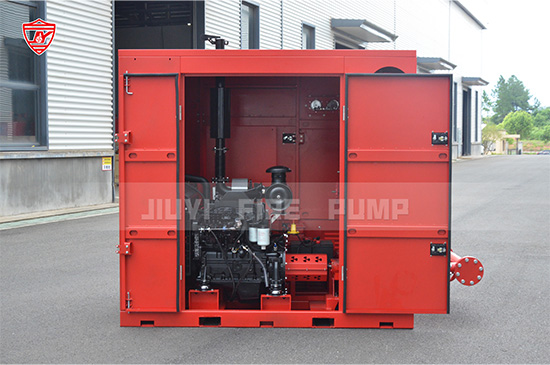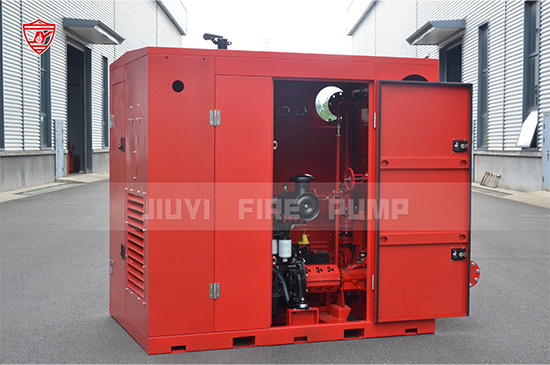When designing a fire protection system, one of the most critical decisions is determining the suction source for outdoor fire pumps. Fire pumps rely entirely on a consistent, reliable water supply to deliver the required pressure and flow during emergencies. A poorly chosen suction source can lead to performance failures, increased maintenance costs, or even system non-compliance.
This article explores the factors you should consider when selecting a suction source for outdoor fire pumps, in line with industry standards such as NFPA 20, and provides practical guidance for achieving system reliability in real-world installations.

The fire pump is the heart of a fire protection system, but without a dependable water source, even the most advanced pump cannot function. The suction source is the lifeline that ensures adequate water volume, pressure, and continuity during fire events. If the suction supply is interrupted or undersized, the entire fire protection system may fail to meet its designed purpose.
Common issues caused by poor suction source selection include:
Air entrainment or cavitation damaging the pump.
Insufficient water volume to sustain fire suppression.
Non-compliance with NFPA 20 requirements.
Operational downtime due to maintenance difficulties.
There are several suction source options available for outdoor fire pumps. The most suitable one depends on your site conditions, water availability, and project requirements.
Advantages:
Readily available in urban or industrial areas.
Requires minimal construction compared to tanks or reservoirs.
Generally reliable if the network has adequate pressure and capacity.
Considerations:
NFPA 20 requires verifying flow and pressure data over time.
Water utility disruptions or maintenance may impact reliability.
Backflow prevention and isolation valves are often required.
Advantages:
Provides a dedicated water source exclusively for fire protection.
Capacity can be designed to meet system demand and duration requirements.
Ideal for remote sites with no municipal supply.
Considerations:
Requires significant civil construction.
Needs regular inspection to avoid sediment buildup or leaks.
Heating or insulation may be required in cold climates.
Advantages:
Can provide large, virtually unlimited water supply.
Suitable for industrial facilities or campuses with available water bodies.
Often cost-effective if the reservoir already exists.
Considerations:
Requires screening and strainers to prevent debris from entering the pump.
Seasonal water level fluctuations must be considered.
Potential for algae growth and environmental regulations.
Advantages:
Can lift water directly from rivers, canals, or deep reservoirs.
Vertical turbine pumps are specifically designed for such suction conditions.
Reliable performance in applications where horizontal split-case pumps cannot be used.
Considerations:
Requires a permanent structure to house the pump bowl assembly.
Maintenance access to wet-pit areas must be planned.
More complex to install compared to standard configurations.
NFPA 20 requires that the suction source can sustain the required flow and duration, typically at least 60 to 90 minutes, depending on the hazard classification.
Verify not only peak flow but also system demand during fire scenarios.
Poor water quality can cause pump wear, clogging, or corrosion.
Install strainers, filters, or coatings if the suction source contains debris, sand, or biological material.
Municipal supplies must be assessed for reliability—consider backup arrangements if interruptions are likely.
Reservoirs or tanks should have redundancy measures such as dual suction lines.
Fire pumps require sufficient NPSH to avoid cavitation.
Suction lift should be minimized; vertical turbine pumps are the preferred choice for deep or fluctuating water sources.
Check local codes for requirements on suction tanks, reservoirs, and municipal connections.
Ensure compliance with environmental regulations regarding water use from natural sources.
Consider available land for constructing tanks or pits.
Ensure accessibility for inspection, maintenance, and refilling if required.
The NFPA 20 Standard for the Installation of Stationary Pumps for Fire Protection provides detailed requirements:
Dedicated Supply: The fire pump suction source should not be shared with non-fire uses unless properly engineered.
Redundancy: Where reliability is questionable, a secondary water supply should be considered.
Suction Piping: Must be properly sized, designed with minimal bends, and avoid air pockets.
Testing and Certification: The water source must be tested for flow, pressure, and reliability before commissioning.
Compliance with NFPA 20 ensures not only legal adherence but also real-world operational safety.
Urban High-Rise Building:
A municipal water supply is typically used but must be supplemented with a suction tank if utility pressure is unreliable.
Industrial Complex in a Remote Area:
A dedicated underground suction tank with a diesel-driven fire pump ensures uninterrupted protection.
Power Plant Near a River:
A vertical turbine fire pump installed in a wet pit draws water directly from the river, with debris screening systems.
Always size suction piping at least equal to or larger than the pump suction flange.
Install test connections to verify flow and performance during commissioning.
Design suction tanks with overflow, drain, and refill provisions.
Provide heating or frost protection for suction tanks in cold climates.
Conduct regular inspections and maintenance of both the pump and the suction source.

Selecting the right suction source for outdoor fire pumps is not just a design decision—it is a life-safety responsibility. The correct choice ensures a dependable water supply, compliance with NFPA 20, and peace of mind that your fire protection system will perform when it matters most.